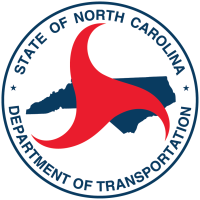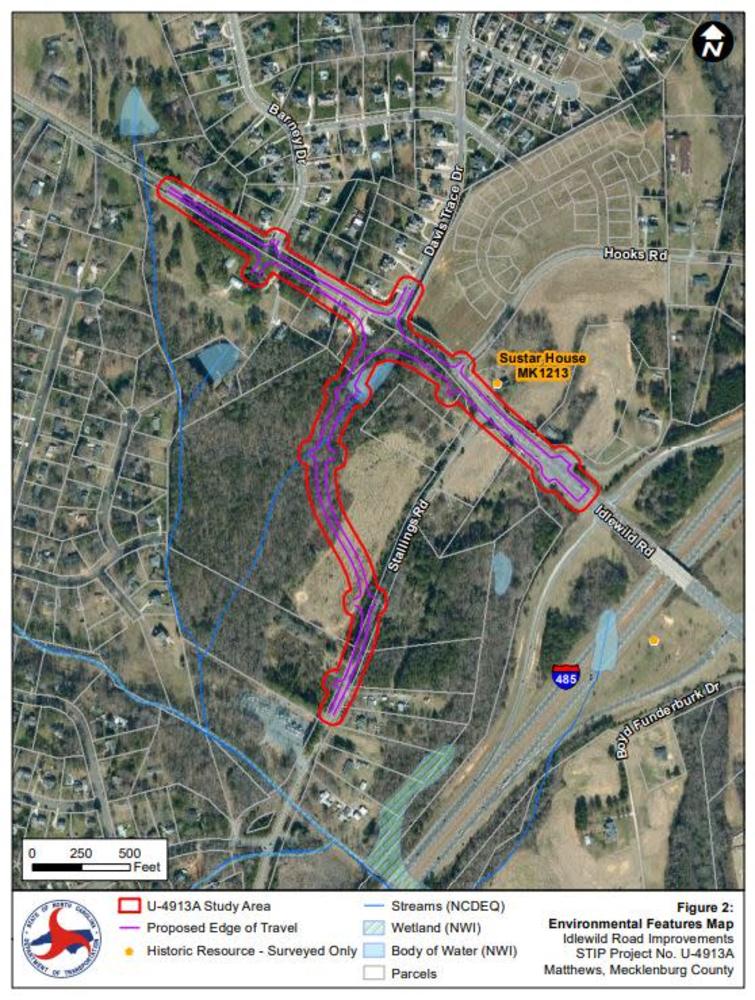U-4913A: Idlewild Road and Stallings Road Improvements
U-4913A: Idlewild Road and Stallings Road Improvements
The N.C. Department of Transportation is proposing to widen Idlewild Road to a multi-lane, median-divided roadway from approximately 500 feet east of Barney Drive to the I-485 Inner Ramps in Mecklenburg County as project U-4913A. The project will also move Stallings Road to align with Davis Trace Drive and improve the intersection by installing a roundabout.
Preliminary Engineering Activities for this project
are underway
Project Details
The N.C. Department of Transportation is proposing to:
- widen Idlewild Road (S.R. 3174) to a multi-lane, median-divided roadway from approximately 500 feet east of Barney Drive to the I-485 Inner Ramps
realign Stallings Road (S.R. 3175) from its current terminus at Idlewild Road to Davis Trace Drive
construct a roundabout at the new intersection of Idlewild Road, Davis Trace Drive, and realigned Stallings Road
The purpose of the project is to improve traffic operations along Idlewild Road.
Project Highlights
From east of Barney Drive to the I-485 Interchange:
two 11-foot lanes in each direction
a variable width center turn lane with raised concrete medians
a roundabout at the intersection of Idlewild Road, Davis Trace Road, and Stallings Road
Project designs include a 6 to 10-foot multi-use path along the North side of Idlewild Road, and 10-foot multi-use path along the south side of Idlewild Road.
Project Map and Typical Sections
Clicking on the map below will open it in a separate window where you can view or download.
Typical Sections
Typical Section - Roadway West of Proposed Roundabout | Typical Section - Roadway East of Proposed Roundabout |
Typical Section - Roundabout
Typical Section - Stallings Road - South of Roundabout
Roundabout: Stallings Road
The N.C. Department of Transportation is constructing more roundabouts to improve safety for drivers, pedestrians and bicyclists. They also help reduce the congestion and backups more typical of traditional intersections with stop signs and traffic signals.
Benefits
- less conflict points result in reduced crash potential
- designed to accommodate large vehicles (including fire trucks) that require greater turning radii as they travel through the circular portion of the roundabout.
How to Drive a Roundabout
Funding
Project U-4913A is shown in the N.C. Department of Transportation’s State Transportation Improvement Program, funded at $5.4 million.
Activity | Estimated Cost* |
|---|---|
Project Development & Design | $ 1.71 Million |
Right-of-Way Acquisition | $ 0.75 Million |
Utilities | $ 0.25 Million |
Construction | $ 8.68 Million |
Total Cost | $ 11.39 Million |
*Costs as shown in currently adopted STIP - subject to change
Project Timeline
Project U-4913A is shown in the N.C. Department of Transportation’s State Transportation Improvement Program, funded at $5.4 million. Ac
Milestone | Date* |
Public Meeting | July 25, 2019 |
Environmental Document | May 16, 2024 |
Right of Way Acquisition Begins | August 2024 |
Construction Begins | October 2025 |
* All future dates - subject to change
Public Involvement
Public involvement is an integral part of the planning process.
NCDOT encourages citizen involvement on transportation projects, and will consider your suggestions and address your concerns.
Comments/Questions
Comments may be submitted below, via phone (984-205-6615 enter code 4666 to leave a message),
email (Idlewild-Widening@publicinput.com), or U.S. Mail to the Project Manager listed below.
All comments received carry equal weight, regardless of submission method.
All comments will be reviewed and suggestions/recommendations
incorporated into designs where feasible.
PROJECT CONTACT INFORMATION
Randy Bowers
Project Manager
NCDOT Highway Division 10
716 W. Main Street
Albemarle, NC 28001
Idlewild-Widening@publicinput.com
PROJECT CONTACT INFORMATION
Frank Masterson
Consultant Project Manager
Kimley-Horn
200 South Tryon Street - Suite 200
Charlotte, NC 28202
Idlewild-Widening@publicinput.com
RESOURCES FOR PROPERTY OWNERS
Although the N.C. Department of Transportation works to minimize the number of homes and businesses displaced by a road project, it is inevitable, in many cases, that a certain amount of private property is needed. The following information explains right of way acquisition and answers questions about the process.
Right-of-Way Brochure Single Page Layout Folleto del Proceso de Adquisición de Bienes Raíces
Right-of-Way Frequently Asked Questions
Right of way Acquisition Process Videos






